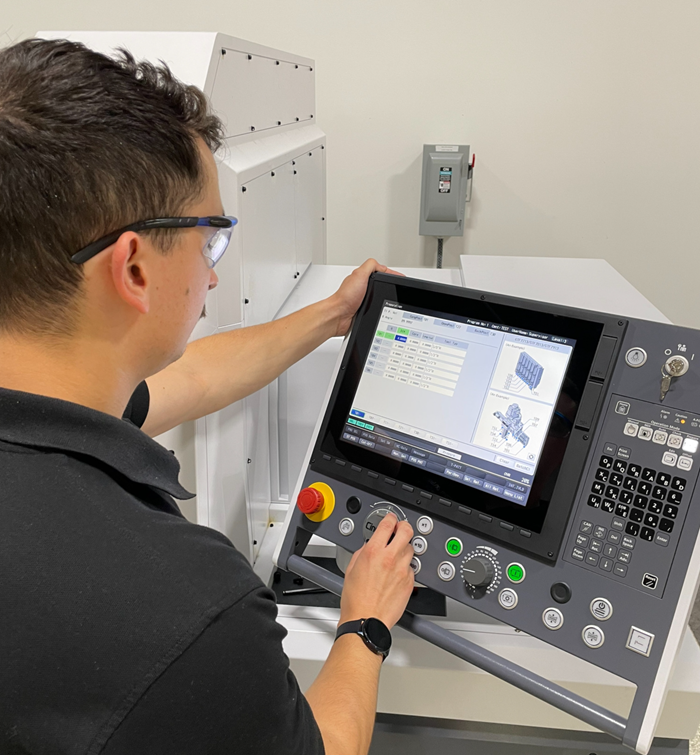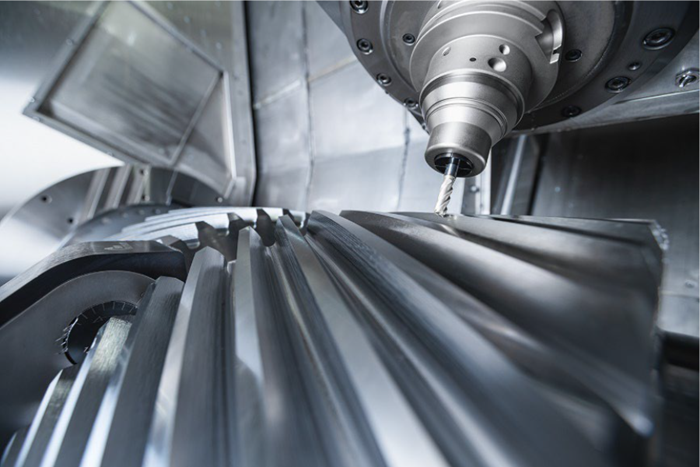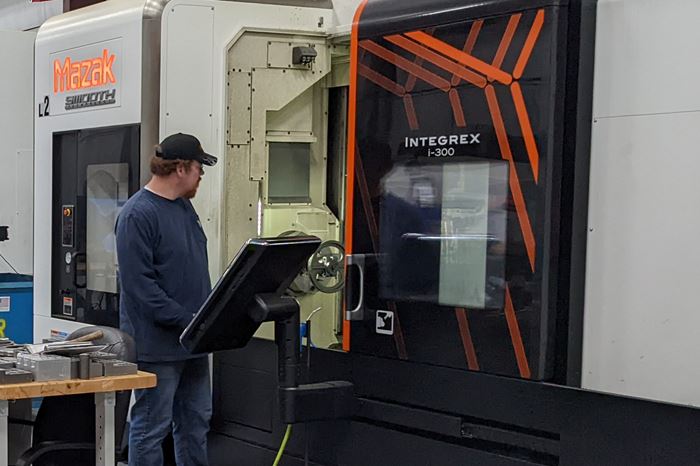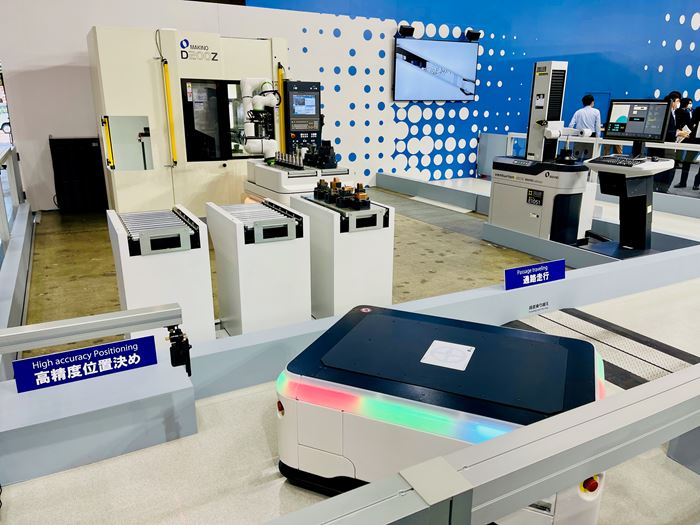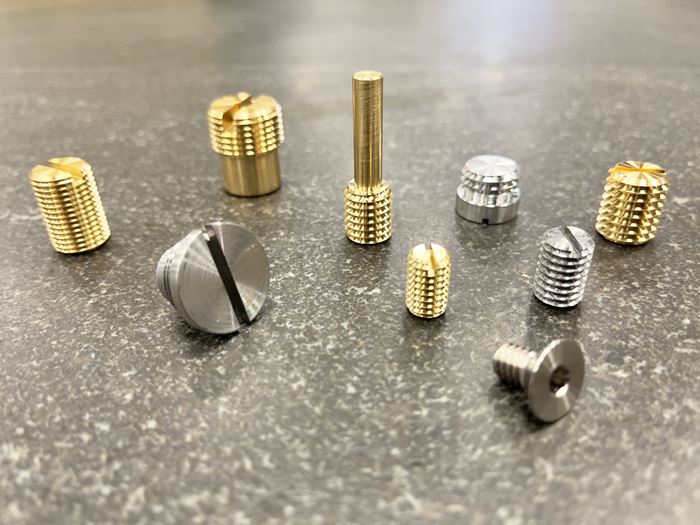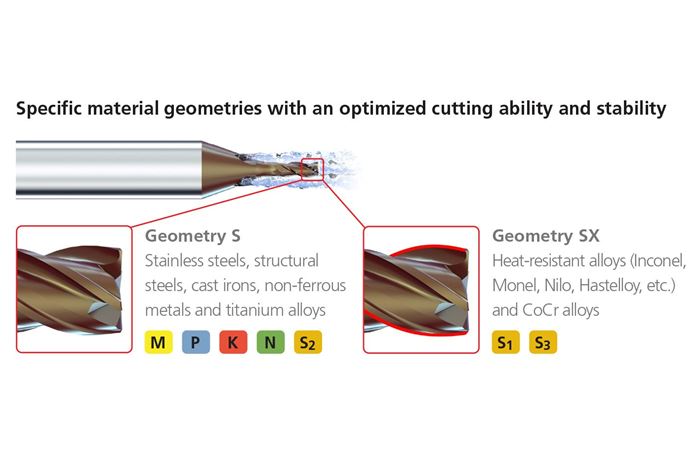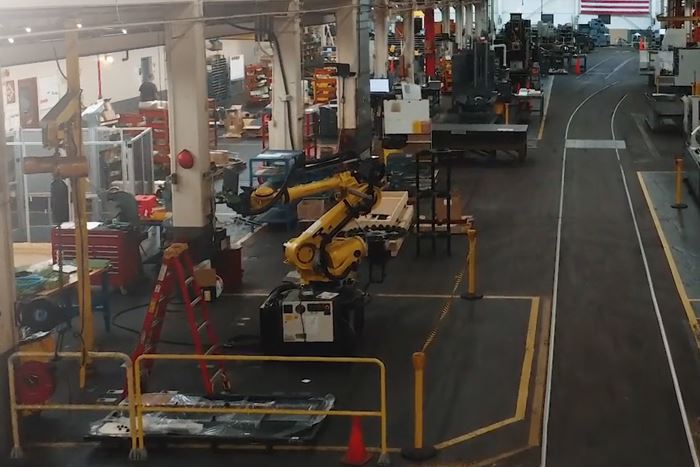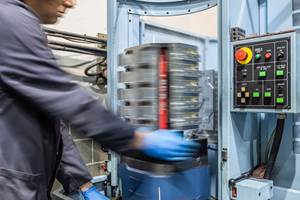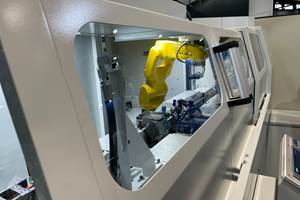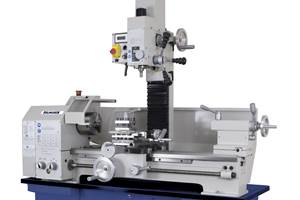Turn/Mill Machines are capable of both rotating-workpiece operations (turning) and rotating-tool operations such milling and cross-drilling. The machine is typically recognizable as a horizontal or vertical lathe, with spindles for milling and drilling simply available at some or all of the tool positions. A part requiring a variety of operations can be machined in one setup, particularly if a subspindle allows the part to be passed from one spindle to another during machining. More recently introduced turn/mill machines depart from the lathe design into something much more like a hybrid machine—combining a lathe’s chucks and spindles with the travels and milling power of a machining center.
Swiss-Type Control Uses CNC Data to Improve Efficiency
Advanced controls for Swiss-type CNC lathes uses machine data to prevent tool collisions, saving setup time and scrap costs.
Turn/Mill: Essential Reading
Turn-Mills 101
Turn-mills are a type of multitasking machine that can shorten cycle times and help facilitate lights-out machining for two common machining types.
How to Get More Efficient Production from Swiss-Type and Multitasking Machines
SolidCAM for multi-axis Swiss type and multitasking machines provides a very efficient CAM programming process, generating optimal and safe Mill-Turn programs, with dramatically improved milling tool life.
Look Again — Multiprocess Machine Tools Hint at Machine Shop Changes
The acceptance of complex machine tools has measurably increased. Recent articles offer a multifaceted look at multitasking machines.
Machine Tool Data Analysis Identifies Effective Setup Tactics
Thanks to the MTConnect standard, it is easy to create a timeline of a machine’s activities and use it to discover ways for improving operations. One example is how to reduce setup time.
Metal Additive Manufacturing: Multitasking’s Latest Trend
Why are an increasing number of machine tool builders adding additive manufacturing to their equipment’s already versatile machining capabilities? Because additive and subtractive are complementary.

FAQ: Turn/Mill
What is a multitasking machine?
Multitasking machines are often built on a turning center platform. These machines use rotary tools to combine several cutting processes such as turning, milling, drilling, tapping, grooving, threading and deep-hole boring on one machine.
Source: Buying a Lathe: Slant-Beds and Multitasking Configurations
What is a turn/mill machine?
A mill/turn machine, or turn/mill machine, is a CNC machine that can perform turning and milling operations.
Why use a multitasking machine?
Why do these machines continue to rise in popularity? It’s simple. They offer the opportunity for a part to be machined completely on one piece of equipment.
Traditionally, parts that might start on a lathe for turning work, for example, could then have to be taken to a mill to create prismatic features. That means, two machines must be set up and tended to. Parts with turning work complete must be transported to the mill. Those parts might have to be staged as work in process (WIP) waiting for the mill to become available (and scheduling can be tricky to efficiently coordinate machine availability). An accumulating number of setups and part repositioning can lead to error stacking. Multiple machines take up more floor space and consume more energy.
In cases in which a multitasking machine can produce parts complete, these issues go away.
Source: Multitasking Machining Equipment: Now the New Normal

Turn/Mill Suppliers
Narrow by Turn/Mill Category
Multitasking Machines Cut Days From Shop’s Setups
Adopting WFL Millturn machines enabled BWXT to condense operations and setups while also providing a simple way to simulate and secure processes.
When Too Many Customers Spoil the Part
Duo CNC used to take on as many customers as the shop could handle. But when growth stalled, a top-down audit by the company’s general manager revealed that its customer base was inhibiting growth — and causing the shop to be less efficient and productive.
IMTS 2022 Review: Attention to Automation Extends Beyond the Robot and the Machine
The advance toward increasingly automated machining can be seen in the ways tooling, workholding, gaging and integration all support unattended production. This is the area of innovation I found most compelling at the recent International Manufacturing Technology Show.
#imts #metalworkingfluids #zaxis
Palmgren Launches Combination Bench Lathe, Mill
The 11" bench engine lathe and gear head mill is able to handle a wide range of turning, milling and drilling operations typically found on much larger machinery.
Weiler to Debut New Automation Features For Its Lathes
Weiler’s V 110 four-way precision lathe introduces features new to the U.S.
#imts
When Organic Growth in Your Machine Shop Isn’t Enough
Princeton Tool wanted to expand its portfolio, increase its West Coast presence, and become a stronger overall supplier. To accomplish all three goals at once, acquiring another machine shop became its best option.
#Basics
A New Milling 101: Milling Forces and Formulas
The forces involved in the milling process can be quantified, thus allowing mathematical tools to predict and control these forces. Formulas for calculating these forces accurately make it possible to optimize the quality of milling operations.
#Basics


